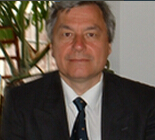


Abstract——Approximately 75% of energy consumption in petrochemical and refining industries is used by furnaces and heaters. Ambient air conditions (pressure, temperature and relative humidity) and operational conditions such as combustion air preheating and using excess air for combustion, can affect the furnace efficiency. If the furnaces are operated at optimized conditions, the huge amounts of savings in energy consumptions would be achieved. By modeling and optimizing of a furnace the optimal operation conditions can be obtained. The aim of this paper is providing a mathematical model which is able to calculate furnace efficiency with change in operating and combustion air conditions. In this paper the furnace of atmospheric distillation unit of a refinery in Iran was considered as a case study. Presented model, first examines changes in ambient air conditions and then presented optimized design of the furnace including excess air reduction and preheating of burning air methods. The furnace is modeled mathematically and simulated by software. Verification of the developed model against the design data highlighted the reliability of the model predictions. The optimal operation conditions to get the maximum efficiency are introduced. The most commonly used optimization methods (excess air reduction and air preheating) are applied to the furnace. The results shows that the preheating of air up to 485.6 and reducing of the excess air until 15%, reduces the exhaust gas temperature from 1000 to 402 and increases the furnace efficiency from 63% to 89% . This is a significant saving in energy. Also by increasing the heat transfer area, the furnace capacity could be increases up to 30% without any change in furnace efficiency. The results show that by investment of 5.23 M$, could be earn 5.81 M$/Yr saving in energy costs, then the payback period was 0.9 year. Economical results also show that the investment purchases and saving benefits cover each other with acceptable payback period in all cases of optimization methods.
Index Terms—Eefficiency, Furnace, Modeling, Optimization
M. E. Masoumi, Islamic Azad University, Tehran North Branch, Faculty
of Engineering, Chemical Engineering Department, P.O.Box:19585/936,
Tehran, IRAN (correspondence author, phone: +98 21 88 77 07 42; fax: +98
21 88 78 72 04; e-mail: m_masoumi@iau-tnb.ac.ir)
Z. Izakmehri, Islamic Azad University, Tehran North Branch, Faculty of
Engineering, Chemical Engineering Department, P.O.Box:19585/936,
Tehran, IRAN (e-mail: izakmehri510@yahoo.com)
Cite: Mir Esmaeil Masoumi and Zahra Izakmehri, "Improving of Refinery Furnaces Efficiency Using Mathematical Modeling," International Journal of Modeling and Optimization vol. 1, no. 1, pp. 74-79, 2011.
Copyright © 2011-2026. International Journal of Modeling and Optimization. unless otherwise stated.
E-mail: editor@ijmo.org